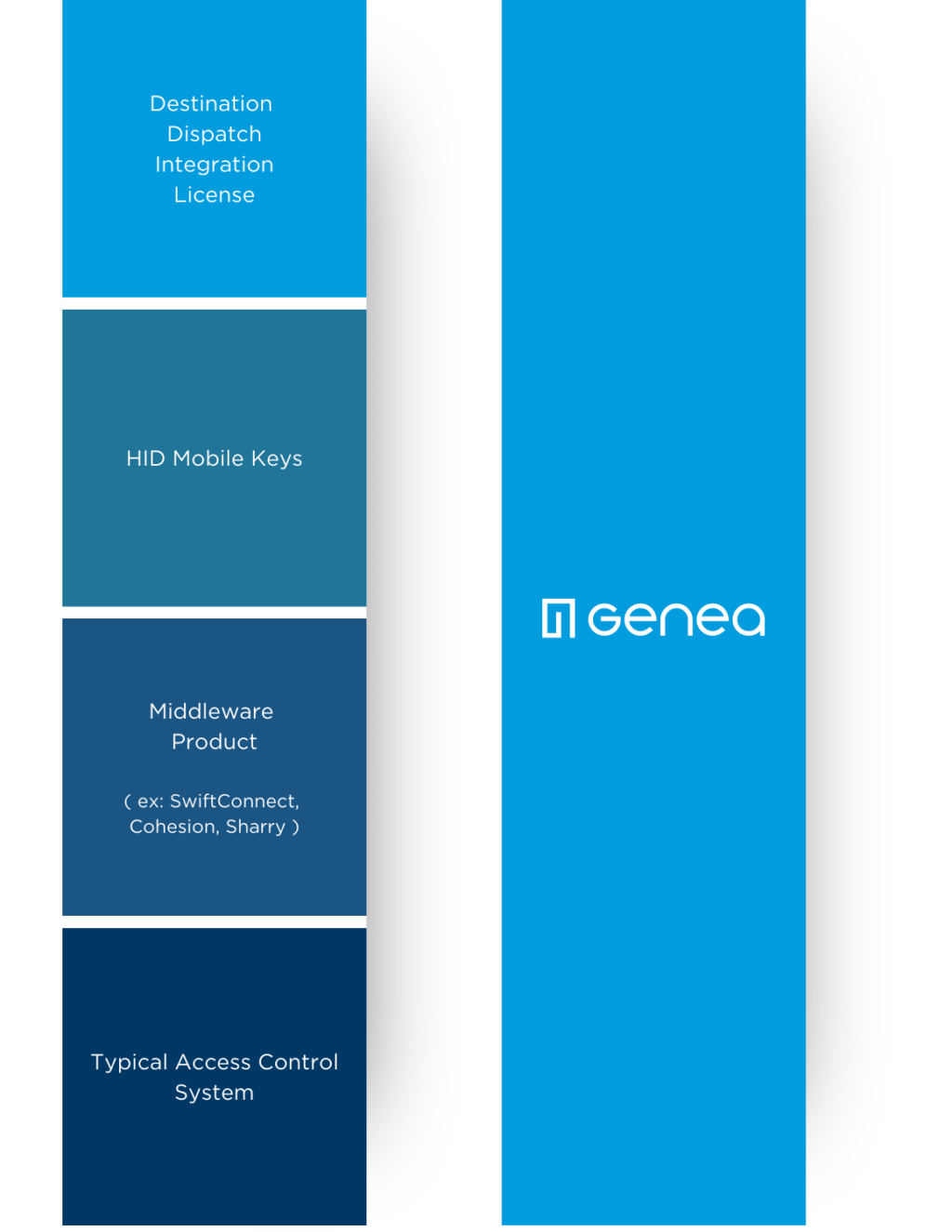Over the last decade, software technology and the internet have dramatically altered the way physical security is managed. More solutions exist than ever before, giving IT and security teams, property managers and end users a greater number of options. Consequently, creating a single, cohesive security strategy has become more complex. Middleware and cloud-based access control aim to simplify security by centralizing some of the most important software tools businesses depend on. These technologies have made it possible to integrate otherwise disparate software platforms and forgo the ripping and replacing of hardware.
Despite the capabilities, some confusion exists when it comes to middleware vs. door access control. From price to functionality, it’s important to weigh the pros and cons of each solution before making an investment. In this blog post, we’ll discuss the features, benefits and drawbacks of purchasing middleware compared to cloud-based access control.
What is Middleware?
Middleware is like a bridge. It connects otherwise isolated hardware and software applications so that they can be managed together. Essentially, middleware is the connective tissue of a physical security system that centralizes important components instead of having them remain separated. For example, if a commercial real estate (CRE) firm has various access control systems spread across multiple buildings, then middleware could be used to connect these systems.
What is Cloud Access Control?
Conversely, cloud-based access control, at its core, is a system comprised of both hardware and software, working in tandem to secure, monitor, provision and report on building activity. Like middleware, some access control systems centralize different parts of physical security. We will explore more benefits of cloud access control later. For now, let’s look at how middleware helps centralize various systems.
How Do Middleware Solutions Help?
While system centralization is the primary benefit of middleware, IT and security teams benefit in other ways, too. These include:
- Saving time- Administrators can monitor and implement actions from a single application.
- No Ripping and Replacing of Hardware- No need to spend money on new hardware. Leave your existing card readers and controllers in place.
- Integrations- IT and security teams can connect important parts of their tech stack with each other. For example, an identity management system like Okta can be connected to an access control system. This helps speed up the process of provisioning new employee badges and credentials.
Additionally, middleware providers like Solo Insight, SwiftConnect and Braxos offer hundreds of “connectors.” These connectors are API integrations that fall into categories such as:
- Enterprise Connectors
- Cloud-based Connectors
- Physical Security Connectors
Connectors help enterprises and commercial real estate companies more easily tether their software solutions. But some limitations of middleware still remain.
The Problems with Middleware
Despite some of the benefits, middleware applications come with drawbacks. Among these drawbacks are the price, hardware lifespan and lack of functionality.
Price of Middleware vs. Price of Genea Security
While it may initially seem like the price of middleware is less expensive than installing a new access control solution, this isn’t necessarily the case. In fact, postponing the installation of a new access control system can be much more expensive in the long run.
In a comparison between Genea and middleware provider, SwiftConnect, it was determined that the access control solution was more cost-effective. Access control systems generally run between a third to half the price of middleware software. Additionally, cloud-based API integrations add efficiency to security processes.
The primary takeaway is this: it does not help your pocketbooks to delay modernizing your access control.

Hardware Lifespan
Although it would be nice to have a software solution that extends the life of the hardware it supports, this isn’t the reality. Access control hardware, like controllers and readers, has a finite lifespan. Middleware doesn’t prolong it. For example, if the controllers of a CRE building are already outdated, middleware will not extend the amount of time they remain in working condition – eventually, you’ll still have to rip and replace. If you sense your hardware will need replacing in the near future, it may be time to rip off the proverbial Band-Aid.
Lack of Functionality
Functionality is a major advantage of migrating to a cloud-based access control system. Along with the migration comes a plethora of modern, user-friendly features, like advanced reporting, custom access roles, building audits and more. These feature sets receive automatic updates from the access control provider as well, meaning IT and security teams will have access to the latest technology. Middleware does not come with these advanced features.
What’s the Solution?
Ultimately, middleware is not a substitution for a solid physical access control solution. However, it does help manage and coordinate the communication between the hardware and software.
Cloud-based access control is essential for managing physical security in large-scale environments, where multiple doors and users need to be managed in a centralized and secure way. To learn more about the software features and how Genea Security can centralize your security, feel free to contact a Genea representative.



